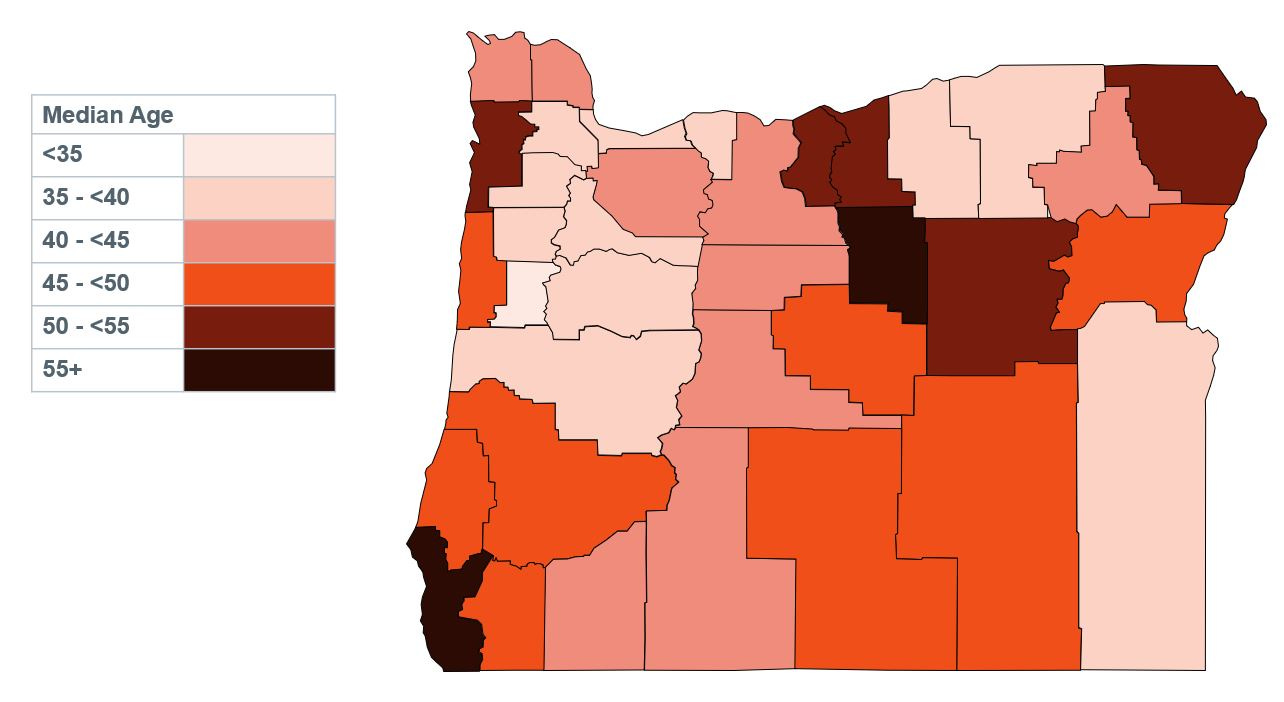John Horvick: What you should know about age demographics and Oregon
Age may just be a number, but it’s certainly playing a role in determining our elected officials and their priorities.
John Horvick is the Political Director at DHM Research.
The Oregon Way project has included the voices of diverse thinkers, practitioners, and leaders who have brought insight to the challenges and opportunities of the state. As a pollster, I hope to contribute by helping to ground these conversations with basic facts about who we are as a people and the opinions we hold.
This is the first of a series of posts in the coming months about the intersection of Oregon’s demographics, behavior, and attitudes. They will be more descriptive than prescriptive. The topics will cover the big demographic categories that shape our society and politics. This first piece starts with age. Upcoming pieces will focus on race, gender, education, and partisanship. Each will take a statewide perspective and aim to put a spotlight on a surprising truth.

Some say age is just a number, but it’s a high one in Oregon.
Oregon’s population is relatively old. The median age of an Oregonian is 39.3 years old compared to 38.5 years for the nation, and we rank 11th among all states in terms of the share of population ages 65+ (18%).
How age is distributed across the state, however, will likely surprise many who hold stereotypes about urban and rural communities. The perception is often that young people leave rural communities for urban areas, resulting in young and youthful cities and old and aging small towns. There is certainly some truth to this. For example, Multnomah and Washington counties have the smallest percentages of people ages 65+ (13%) while Wheeler County has the highest percentage (36%). However, Oregon’s rural counties are quite varied.
Nineteen of Oregon’s counties have larger populations ages 65+ than they do populations less than 18. Some of these include rural counties like Curry, Tillamook, Grant, and Wheeler. At the same time, 17 counties have larger populations under age 18 than 65+. This latter group includes large urban counties in the Portland metro area, and university communities like Benton and Lane counties, but also rural counties such as Umatilla, Morrow and Malheur.
A deeper dive into two specific counties reveals even more nuance. Take Curry and Malheur counties. Both are rural by any definition, but by age they are complete opposites. In Curry County the median age is 55.3 years old and more than a third of the population (34%) is age 65+. In Malheur County, by contrast, the median age is just 36.1 years and only 16% of the population is age 65+. Similarly, a much smaller percent of the population in Curry County is less than 18 years old (15%) than in Malheur County (25%).
When people talk about the urban and rural divide in Oregon, many would lump Curry and Malheur counties into the same category and think of them as equivalents. However, their age profiles are profoundly different. In fact, by age, Malheur County is more like Multnomah County than many of its rural peers.
Oregon’s counties have significantly different short- and long-term challenges that are shaped by their population demographics. Consider the differences in needs related to education, health care, housing, or workforce training for counties with median ages two decades apart. Much of the differences in age, particularly in rural counties, are shaped by race and immigration, which will be explored further in this series.

Age is more than a number come election season
It’s a well-known fact that younger people vote less frequently and consistently than those who are older. While well-known though, I still find that it is underappreciated, particularly in non-presidential elections. We can see this by looking at turnout in Oregon’s two 2020 elections.
Statewide turnout for the May primary election was 47%. By age, turnout ranged from 26% among voters ages 18-34 to 71% among voters ages 65+. Put another way, there were more non-voting 18-34 year olds than there were people ages 65+ who cast a ballot.
Notably, this was not an election in which nothing was at stake; on the ballot were pivotal primary elections for president, the U.S. Senate and House of Representatives, Oregon secretary of state, attorney general, treasurer, and Oregon state legislators. Additionally, there were 48 local funding measures on ballots statewide and scores of other city and county elections.
While I strongly believe that most people running for office sincerely want to represent their entire communities, when older voters turnout at twice the rate, or more, than do younger voters, the incentives for candidates is to align their priorities and promises with those of the older voters, often to the detriment of younger voters.
While not as great, the age differences in turnout persisted in the general election. In November, overall turnout was 82%. By age, it ranged from a low of 69% among voters ages 18-34 to 91% among those ages 65+.
Age may just be a number, but it’s certainly playing a role in determining our elected officials and their priorities.
*****************************************
Send feedback to John:
@horvick
Keep the conversation going:
Facebook (facebook.com/oregonway)
Twitter (@the_oregon_way)
Check out our podcast:






